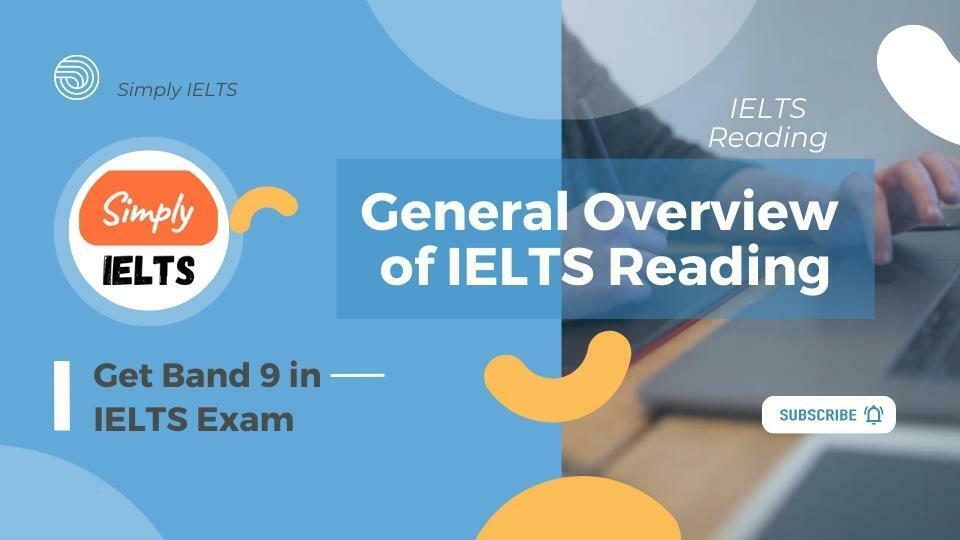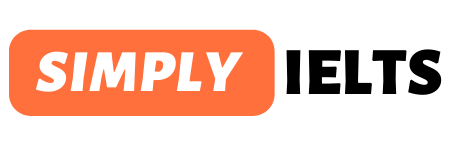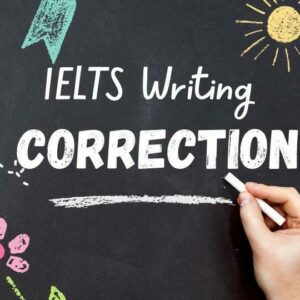General Overview of IELTS Reading section

In this lesson of IELTS Reading course, you will know a general overview of IELTS Reading section.
IELTS reading section is very similar to what you have already encountered on Reading comprehension back in your schools. You will read a particular passage and answer questions which are based on that passage. All the details on the passage are enough to answer the questions on the exam. You don’t need any additional information.
Now when I say reading comprehension is tested, what I mean is through several types of questions, IELTS checks your ability to find information and analyse it. Also, it tests whether you can correlate two sets of data and how aware are you of the English culture.
On IELTS Reading section, you will face about 3 parts which contain 3 to 5 passages depending on whether you are appearing for IELTS General Training or IELTS Academic. Overall, you will answer about 40 questions in 60 minutes. Additional time to transfer answers from question-paper to answer sheet like that given on Listening is not provided on the Reading section.
Format of IELTS Reading section
The format of reading sections is a bit different for IELTS General Training and IELTS Academic module. Off course there are similarities as well.
Reading section on IELTS Academic module
In the Academic module, you will read face 3 parts. In each part, you will read 1 long passage. Generally, it is observed that you will read more than 1000 words in each of the passages. The subject of discussion in these texts is related to academia. For, example, you may read something about the history of Greece or Archaeological studies in Mexico or even new experiments in Astronomy. You may read such articles on websites of Discovery Channel or National Geography.
Now, many students are a bit frightened after hearing these examples. Well don’t worry, you don’t need any specific knowledge to appear for the IELTS Reading section. All answers to the questions are within the paragraphs that you are going to read.
| IELTS Academic Reading section | |
|---|---|
| Number of parts on IELTS Reading | 3 |
| Number of passages on each part | 1 |
| Total number of questions on the IELTS Academic Reading section | 40 |
| Time to answer questions | 60 |
| Additional time to answer questions | No |
| Topics in the reading passages | Similar to that in the textbooks |
Reading section on IELTS General Training
On IELTS General Training, you are going to read about 5 passages spread across the three sections. In part 1 and 2, you will read 2 short texts each, whereas you will read a long passage in part 3.
Part 1 on IELTS General Training Reading section
Short texts in Part 1 will be instructions, procedures or advertisements or something that you read daily. For example, if you enter an elevator, you may read a set of instructions which elaborate precautions to be taken and emergency procedures in the lift. When IELTS offers such reading texts, it tests your ability to understand and interpret such short, concise sentences. You will read overall two such passages on Part 1 and answer about 13 to 14 questions on them.
Part 2 on IELTS General Training Reading section
In part 2, you will read articles related to the office environment or professional etiquette. For example, you may read an article about performance-related pay or benefits for the staff of a particular company. Again you will encounter two such texts and answer about 13 to 14 questions based on those.
Part 3 on IELTS General Training Reading section
Part 3 contains a long passage which needs maximum attention by students. You will answer about 13 to 14 questions only on this passage. The subject matter of this passage is very general nature comprising of a wide variety of long articles from newspapers or magazines or even books.
| IELTS General Training Reading section | |
| Number of parts on IELTS Reading | 3 |
| Number of passages on each part | 2 passages in the first 2 parts and 1 passage in part 3 |
| Total number of questions on the IELTS General Training Reading section | 40 |
| Time to answer questions | 60 |
| Additional time to answer questions | No |
| Topics in the reading passages | Everyday issues that appear in newspapers, advertisements or workplaces |
Answer sheets on IELTS Reading section
On this screen, you can see the answer-sheet used on IELTS Reading section. You may notice a thick blue border around the answer-sheet. The IELTS will always provide you such colour-coded answer-sheets so that invigilators can distinguish between the four sections easily.
Can I use capital letters on the IELTS Reading section?
While writing answers remember, answers on Listening and Reading sections are NOT case sensitive. That means you need not worry whether the first letter of your answer is capital or not. Upper case and lower case doesn’t matter. Also, ensure your handwriting is readable. In case, you are not very confident of your handwriting; you may simply use all capitals. It is accepted on IELTS.
Types of questions on IELTS Reading section
Type 1: Matching Information
On this question type, you will notice a letter assigned to each paragraph. The question will present a piece of specific information. Your job is to find out which section covers that information. If you find that paragraph which has letter B attached to it has that detail, your answer is B.
Usually, the IELTS may ask for specific details, an example, a reason, a description, a comparison, a summary, an explanation. The matching information question tests your ability to recognise outline or definition in the text.
Type 2: Matching Headings
Here, you are given a list of headings as answer-choices, usually identified with lower-case Roman numerals (i, ii, iii, etc.). These headings are nothing but the main ideas of the paragraphs.
Your job is to match the heading to the correct paragraphs, which are marked alphabetically. You must write the matching Roman numerals in the boxes on the answer sheets.
The number of headings will exceed the number of paragraphs most of the times. Also, it is possible that some sections are not included in the task.
Type 3: Matching Features
On matching features question on IELTS Reading, you match pieces of information to a list of options. Usually, the options or choices are a group of features from the passage, and they are identified by letters. For instance, you are required to match various research findings to a list of scientists,
In some cases, some choices are not used, while in other instances a particular option may be used more than once.
This question type tests your ability to find out relationships and connections between facts in the passage and ability to recognise opinions and theories.
Type 4: Matching sentence endings (for IELTS Academic only)
On this question, you are given the first half of a few sentences. You must complete those sentences appropriately by choosing the correct half from the list of given options. While doing so, remember the information provided in the passage should not be violated
Here, you may witness more number of options than the number of questions.
Matching sentence ending questions test your ability to grasp the main idea in the sentence.
Type 5: Multiple Choice questions
On multiple-choice questions, you must answer the question by selecting the correct answer choice among the list of possible answers. However, on the IELTS Reading section, you may observe two variations of this answer choice.
- Choose 1 correct answer choice out of 4
- Choose more than 1 correct answer choices out of 5 or 7
Each answer choice is allotted a letter. You must write the letter(s) corresponding to the correct answer(s).
Unfortunately, many students consider this question to be too easy. However, from our observations, this is easily one of the most challenging question types on the IELTS Reading section.
Type 6: Identifying information (True/False/Not Given)
On identify the information question on IELTS Reading section, you are given a set of sentences. You must identify whether that statement is true or false or not offered on the passage at all or not. I am sure most of you have solved this question in your schools as well. However, similar to the previous question type, many students ignore this question type since they think this is a simple one.
Most of the students get confused between two answer choices, false and not given. Understand, a statement is false if contradictory information is provided in the text. At the same time, a statement is not shown when the information in the question sentence is not mentioned in the passage at all.
Type 7: Identify the writer’s view or claim (for IELTS Academic only)
This question type is very similar to the previous one. Here as well, you are given a list of question statements. However, the difference is you are not searching for factual information. Instead, you must determine whether the given statement matches with the author’s view or claim or not.
If the sentence matches the writer’s point of view, the statement is “YES”. If it contradicts, the statement is “No”. And if the author has not expressed any view on the statement given, then it should be marked as “Not Given”.
Type 8: Sentence completion
As the name suggests, you need to complete the given sentences in the questions by reading the passage. While writing the answers, it is essential to keep in mind that each answer may have a specific limit on the number of words or number used.
Sentence completion questions simply check your ability to locate details.
Type 9: Summary, note, table, flow-chart completion
The question comprises a summary of the part of the text from the passage. This summary is either in the form of a note, table, flow-chart or simple textual summary. Some of the words from this summary are missing. You must find out these words from the text and complete it. Again beware of the number of words and numbers you may use to complete this information.
Sometimes, you will be provided with a list of answer choices. In this case, strictly report these options as your answers.
Type 10: Diagram Label completion (for IELTS Academic only)
This question type is very similar to the above one. Its representation may change. Also, this question type is common in the IELTS Academic Reading section.
Type 11: Short answer question
This is the most classic form of a question on Reading comprehension. All you need to do is read the question and answer it from the facts given in the passage.
While doing so, pay attention to the number of words and numbers allowed. Usually, you must write your answers within 3 words. So, don’t write your answers in complete sentences.
Short answer questions test your ability to find out and understand precise information in the text.
Scoring on IELTS Reading section
For both IELTS Academic and General Training, each question carries 1 mark. There is no negative marking. So, if you answer 34 questions correctly, your raw score will be 34. IELTS prescribes a conversion table to convert this raw score into bands. And this table is different for IELTS Academic and General Training.
Band score calculator for IELTS Academic Reading section
| No. of correct answers | 40-39 | 38-37 | 36-35 | 34-33 | 32-30 | 29-27 | 26-23 | 22-19 | 18-15 |
| Bands | 9 | 8.5 | 8 | 7.5 | 7 | 6.5 | 6 | 5.5 | 5 |
Band score calculator for IELTS General Training Reading section
| No. of correct answers | 40 | 39 | 37-38 | 36 | 34-35 | 32-33 | 30-31 | 27-29 | 23-26 |
| Bands | 9 | 8.5 | 8 | 7.5 | 7 | 6.5 | 6 | 5.5 | 5 |
You may observe that you must get more correct answers on the General Training module than that on Academic module to get same bands on IELTS Reading section. However, it does not mean that the IELTS General training Reading section is more challenging than the IELTS Reading Academic module.
I sincerely hope that you have better insights into the IELTS Reading section.





Thankyou,,nice staff acquired.preparing for my exams on 10.11.22 trying my best